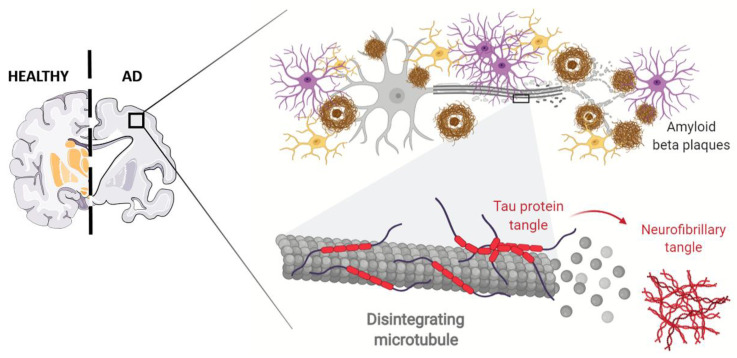Figure 2.
Schematic representation of Alzheimer Disease AD pathophysiology. This progressive neurodegenerative disorder is characterized by atrophy of brain regions, leading to a significant reduction in brain volume correlated to cognitive decline and memory deficits. The neuropathological hallmarks of AD are represented by extracellular senile plaques (the brown ring in the inlet), composed of amyloid-β (Aβ) peptide, followed by intracellular deposition of neurofibrillary tangles (NFTs) generated by hyperphosphorylated protein tau. In addition, glial (pink cells) and microglial (yellow cells) activation and subsequent inflammatory responses are thought to contribute to the neurodegenerative symptoms of AD. Adapted from “Alzheimer’s Brain (Disintegrating Microtubule)” by BioRender.com (2021). Retrieved from (https://app.biorender.com/biorender-templates/, accessed on 13 July 2021).

